Fleurs du Mal Magazine


Or see the index

1909
La dame avait une robe
En ottoman violine
Et sa tunique brodée d’or
Était composée de deux panneaux
S’attachant sur l’épaule
Les yeux dansants comme des anges
Elle riait elle riait
Elle avait un visage aux couleurs de France
Les yeux bleus les dents blanches et les lèvres très rouges
Elle avait un visage aux couleurs de France
Elle était décolletée en rond
Et coiffée à la Récamier
Avec de beaux bras nus
N’entendra-t-on jamais sonner minuit
La dame en robe d’ottoman violine
Et en tunique brodée d’or
Décolletée en rond
Promenait ses boucles
Son bandeau d’or
Et traînait ses petits souliers à boucles
Elle était si belle
Que tu n’aurais pas osé l’aimer
J’aimais les femmes atroces dans les quartiers énormes
Où naissaient chaque jour quelques êtres nouveaux
Le fer était leur sang la flamme leur cerveau
J’aimais j’aimais le peuple habile des machines
Le luxe et la beauté ne sont que son écume
Cette femme était si belle
Qu’elle me faisait peur
Guillaume Apollinaire
(1880 – 1918)
Poéme: 1909
Recueil: Alcools (1913)
• fleursdumal.nl magazine
More in: Apollinaire, Guillaume, Archive A-B, Archive A-B, Dadaïsme, Guillaume Apollinaire, Histoire de France
En quelques pages, à la première personne, Annie Ernaux (1940) raconte une relation vécue avec un homme de trente ans de moins qu’elle.

Une expérience qui la fit redevenir, l’espace de plusieurs mois, la « fille scandaleuse » de sa jeunesse.
Un voyage dans le temps qui lui permit de franchir une étape décisive dans son écriture.
Ce texte est une clé pour lire l’œuvre d’Annie Ernaux — son rapport au temps et à l’écriture.
Annie Ernaux
Le jeune homme
Editions Gallimard
ISBN 9782072980090
Paru le 05 mai 2022
Collection Blanche, Gallimard
48 pages,
118 x 185 mm, sur Vélin pur fil
Genre : Romans et récits Époque : XXe-XXIe siècle
Prix : € 8,00
• fleursdumal.nl magazine
More in: - Book Lovers, - Book Stories, Annie Ernaux, Archive E-F, Archive E-F, Histoire de France
Joris-Karl Huysmans (1848-1907) wordt door velen tot de fine fleur van de Franse letteren gerekend. Zelf omschreef hij zich vaak als een ‘Parijse Hollander’.
 Met het hoofd in Frankrijk, met het hart in Nederland en met de pen in een spagaat werkte deze auteur aan een uitzonderlijk oeuvre, doorspekt met verwijzingen naar – en reflecties op – de Nederlandse cultuur, volksaard, schilderkunst en religie.
Met het hoofd in Frankrijk, met het hart in Nederland en met de pen in een spagaat werkte deze auteur aan een uitzonderlijk oeuvre, doorspekt met verwijzingen naar – en reflecties op – de Nederlandse cultuur, volksaard, schilderkunst en religie.
Dit boek brengt deze Hollandse kant van Huysmans in kaart. Aan de hand van zijn biografie (Huysmans en Nederland), zijn kritische onthaal in de literaire journalistiek (Huysmans in Nederland) en zijn thematiek (Nederland in Huysmans), wordt een rijk en verrassend beeld gevormd van deze sleutelfiguur uit het Franse fin-de-siècle.
Huysmans omschreef zichzelf graag als een ‘Parijse Hollander’. Met zijn ene been in het artistieke leven van de Franse hoofdstad en met zijn andere in de Brabantse klei, werkte deze auteur aan een uitzonderlijk oeuvre doorspekt met verwijzingen naar – en reflecties op – de Nederlandse cultuur, volksaard, schilderkunst en religie. Dit boek brengt deze Hollandse kant van Huysmans in kaart. Aan de hand van zijn biografie, zijn kritische onthaal in de literaire journalistiek en zijn thematiek, wordt een rijk en verrassend beeld gevormd van deze sleutelfiguur uit het fin-de-siècle. Charles-Georges Huijsmans. Joris-Karl Huysmans. Met het hoofd in Frankrijk, met het hart in Nederland, met de pen in een spagaat.
# new books
Joris-Karl Huysmans (1848-1907)
Een Parijse Hollander
Auteur: Marc Smeets
Taal: Nederlands
ISBN: 9789087049256
NUR codes: 654 , 647
Jaar van uitgave: 2021
Druk 1
Uitgeverij Verloren
Bindwijze: paperback
Aantal bladzijdes: 226
Met illustraties
€20,00
• fleursdumal.nl magazine
More in: - Book News, - Bookstores, Archive G-H, Archive S-T, Histoire de France, Huysmans, J.-K., Huysmans, Joris-Karl, Joris-Karl Huysmans
Les Goncourt furent à la fois acteurs et mordants spectateurs d’un demi-siècle de vie littéraire et artistique. Écrivains, critiques, collectionneurs, ils marquèrent profondément leur temps. Cette biographie, rédigée par les deux plus grands spécialistes des Goncourt et appelée à faire date, renoue les fils de cette intense vie à deux.
 Le nom de Goncourt connaît la célébrité grâce au plus fameux des prix littéraires, mais il mérite aussi de survivre car il fut porté par deux frères, hommes de lettres novateurs, irremplaçables témoins de leur temps.
Le nom de Goncourt connaît la célébrité grâce au plus fameux des prix littéraires, mais il mérite aussi de survivre car il fut porté par deux frères, hommes de lettres novateurs, irremplaçables témoins de leur temps.
Leur double biographie ressuscite un demi-siècle de vie littéraire et artistique, où l’on croise Gautier et Flaubert, où l’on côtoie Renan, Taine, Berthelot, Daudet, Zola. Collectionneurs impénitents, esthètes dolents et élitistes, Jules et Edmond de Goncourt ont transformé leur vie et celle de leurs proches en pages d’écriture. Leur Journal, leurs romans, qui ont initié le naturalisme et la littérature fin de siècle, la création de l’académie des Goncourt, tout témoigne de leur aspiration à la survie littéraire. Leurs engagements avant-gardistes s’associent paradoxalement à un conservatisme politique qui n’exclut ni la misogynie ni l’antisémitisme.
Fondée sur des archives familiales, sur des correspondances largement inédites et sur le dépouillement de la presse de la seconde moitié du xixe siècle, cette biographie magistrale s’attache à l’œuvre littéraire et historique aujourd’hui méconnue, elle renoue les fils d’une intense vie à deux, en pénétrant dans l’intimité affective d’une gémellité fusionnelle.
Jean-Louis Cabanès, professeur émérite à l’université de Paris-Nanterre, spécialiste du roman au xixe siècle et des rapports qu’entretiennent écrits littéraires et textes médicaux, est l’auteur de nombreux ouvrages. Il dirige un collectif chargé d’établir une édition critique du Journal des Goncourt.
Pierre Dufief, professeur émérite à l’université de Paris-Nanterre, a travaillé sur le roman (1850-1914) ainsi que sur les écritures personnelles (Les Écritures de l’intime, Bréal, 2001). Président de la Société des amis des frères Goncourt, il édite la correspondance des deux frères.
Les Frères Goncourt
Jean-Louis Cabanès et Pierre Dufief
Parution: 11/03/2020
Pages: 800
Format: 155 x 235 mm
Collection: Histoire Fayard
EAN: 9782213685960
Prix: € 35.00
Les Frères Goncourt de Jean-Louis Cabanès et Pierre Dufief a reçu la Mention spéciale du Prix Goncourt de la biographie.
# new books
Les Frères Goncourt
Jean-Louis Cabanès & Pierre Dufief
• fleursdumal.nl magazine
More in: #Biography Archives, - Book News, Archive G-H, Archive G-H, Awards & Prizes, Émile Zola, Histoire de France, Jules et Edmond de Goncourt, Libraries in Literature
Dans un bel essai biographique, Patricia Bouchenot-Déchin redonne vie à l’auteur de Peau d’âne et du Conte de ma mère l’Oye, en replaçant l’homme au coeur d’un milieu et d’un environnement de relations personnelles.
 Il était une fois cinq frères liés comme les doigts d’une main… Le benjamin, Charles, les mène sur le chemin de la gloire. Et pourtant, après avoir été la cheville ouvrière de l’ambitieuse politique artistique de Louis XIV pendant vingt ans, il est brutalement évincé du pouvoir. L’académicien et écrivain polémiste, blessé, néanmoins toujours joueur, riposte et oppose des rêves fastueux à la réalité. Champion des Modernes contre les Anciens, il laisse paraître, au terme d’une vie bien remplie, ses contes – toujours aussi célèbres aujourd’hui – mais étrangement sous le seul nom de son fils.
Il était une fois cinq frères liés comme les doigts d’une main… Le benjamin, Charles, les mène sur le chemin de la gloire. Et pourtant, après avoir été la cheville ouvrière de l’ambitieuse politique artistique de Louis XIV pendant vingt ans, il est brutalement évincé du pouvoir. L’académicien et écrivain polémiste, blessé, néanmoins toujours joueur, riposte et oppose des rêves fastueux à la réalité. Champion des Modernes contre les Anciens, il laisse paraître, au terme d’une vie bien remplie, ses contes – toujours aussi célèbres aujourd’hui – mais étrangement sous le seul nom de son fils.
Dans une biographie pleine d’allant et riche en inédits, Patricia Bouchenot-Déchin révèle un homme complexe et fantasque. Son destin héroïque et tragique, façonné dans le miroir ardent de ses métamorphoses, s’apparente à celui d’un Petit Poucet devenu tour à tour Chat botté, prince charmant et Barbe bleue.
Patricia Bouchenot-Déchin a publié biographies, essais et romans. Ses travaux sur André Le Nôtre et sa biographie parue chez Fayard ont reçu de nombreux prix en Europe et aux États-Unis parmi lesquels, en France, le prix Hugues Capet 2013 et en 2014 le prix d’Académie de l’Académie française.
Charles Perrault
par Patricia Bouchenot-Déchin
2018
Pages: 360
Format: 135 x 215 mm
Collection: Histoire
FAYARD
EAN: 9782213705644
€ 21.90
# new books
Charles Perrault
par Patricia Bouchenot-Déchin
• fleursdumal.nl magazine
More in: #Biography Archives, - Book News, Archive A-B, Archive O-P, Grimm, Andersen e.o.: Fables, Fairy Tales & Stories, Histoire de France, Perrault
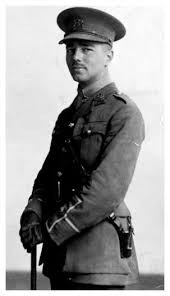
Dulce et Decorum Est
Bent double, like old beggars under sacks,
Knock-kneed, coughing like hags, we cursed through sludge,
Till on the haunting flares we turned our backs,
And towards our distant rest began to trudge.
Men marched asleep. Many had lost their boots,
But limped on, blood-shod. All went lame; all blind;
Drunk with fatigue; deaf even to the hoots
Of gas-shells dropping softly behind.
Gas! GAS! Quick, boys!—An ecstasy of fumbling
Fitting the clumsy helmets just in time,
But someone still was yelling out and stumbling
And flound’ring like a man in fire or lime.—
Dim through the misty panes and thick green light,
As under a green sea, I saw him drowning.
In all my dreams before my helpless sight,
He plunges at me, guttering, choking, drowning.
If in some smothering dreams, you too could pace
Behind the wagon that we flung him in,
And watch the white eyes writhing in his face,
His hanging face, like a devil’s sick of sin;
If you could hear, at every jolt, the blood
Come gargling from the froth-corrupted lungs,
Obscene as cancer, bitter as the cud
Of vile, incurable sores on innocent tongues,—
My friend, you would not tell with such high zest
To children ardent for some desperate glory,
The old Lie: Dulce et decorum est
Pro patria mori.
Wilfred Owen
(1893 – 1918)
Dulce et Decorum Est (Poem)
# Armistice of 11 November 1918 – 2018
fleursdumal.nl magazine
More in: Archive O-P, Archive O-P, Galerie des Morts, Galerie Deutschland, Histoire de France, Historia Belgica, History of Britain, Owen, Wilfred, WAR & PEACE
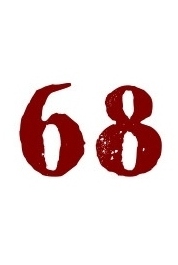 Fifty years ago, the demonstrations of May 68 turned the streets of Paris and Nanterre upside down, and shook France to its very core. Linked with a vast international protest movement, it brought about profound changes in French society and abroad.
Fifty years ago, the demonstrations of May 68 turned the streets of Paris and Nanterre upside down, and shook France to its very core. Linked with a vast international protest movement, it brought about profound changes in French society and abroad.
Fifty years on, various cultural institutions explore the history and legacy of May – June 1968 through get-togethers, exhibitions, newly-opened archives, participatory workshops, theatre, music, debates and talks casting fresh light on the events.
# more information on website soixantehuit.fr and fleursdumal.nl
More in: Exhibition Archive, Histoire de France, PRESS & PUBLISHING, Protests of MAY 1968
“The experiences could be understood only as being of such extremity that they stood beyond written words; it was not a failure of language, but a view that, for the individual, language, particularly written words, and the enormity of the experience were not matched.”
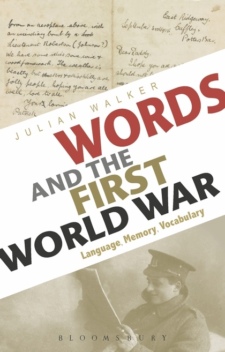 First World War expert Julian Walker looks at how the conflict shaped English and its relationship with other languages. He considers language in relation to mediation and authenticity, as well as the limitations and potential of different kinds of verbal communication.
First World War expert Julian Walker looks at how the conflict shaped English and its relationship with other languages. He considers language in relation to mediation and authenticity, as well as the limitations and potential of different kinds of verbal communication.
Walker also examines:
– How language changed, and why changed language was used in communications
– Language used at the Front and how the ‘language of the war’ was commercially exploited on the Home Front
– The relationship between language, soldiers and class
– The idea of the ‘indescribability’ of the war and the linguistic codes used to convey the experience
‘Languages of the front’ became linguistic souvenirs of the war, abandoned by soldiers but taken up by academics, memoir writers and commentators, leaving an indelible mark on the words we use even today.
Julian Walker is a writer, researcher, artist and educator. He is an Honorary Research Associate at University College, London, UK. He is the co-author of Languages and the First World War: Communicating in a Transnational War (2016), the author of The Roar of the Crowd (2016) and Trench Talk (2012) among many others. His website is www.julianwalker.net
Writes: Lexicology, First World War, Sociolinguistics and Linguistic Anthropology, World History, Heritage
Author of : Words and the First World War, Team Talk, Discovering Words in the Kitchen, Discovering Words
“This is a substantial book, dense but always accessible, covering both time and space. Gratifyingly, it sidesteps an all too common error that entraps books on words, of becoming no more than a padded dictionary.” – The Daily Telegraph
Words and the First World War
Language, Memory, Vocabulary
By: Julian Walker
Published: 28-12-2017
Format: Paperback
Edition: 1st
Extent: 416
ISBN: 9781350001923
Imprint: Bloomsbury Academic
Illustrations: 50 bw images
Dimensions: 216 x 138 mm
Prize: £14.99
fleursdumal.nl magazine
More in: *War Poetry Archive, - Book News, - Book Stories, Archive W-X, Art & Literature News, Histoire de France, Historia Belgica, History of Britain
Vanaf 14 oktober 2017 tot en met 2 april 2018 presenteert het Fries Museum in Leeuwarden de tentoonstelling Mata Hari: De mythe en het meisje.
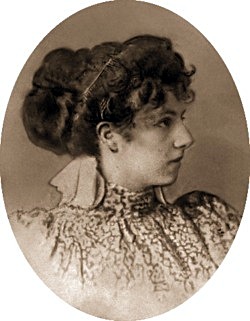 Precies honderd jaar na haar dood vertelt het museum voor het eerst het volledige levensverhaal van Margaretha Geertruida Zelle. Het meisje uit Leeuwarden groeide aan het begin van de vorige eeuw uit tot de wereldberoemde danseres Mata Hari. Aan het eind van de Eerste Wereldoorlog werd ze door de Franse dienst opgepakt en geëxecuteerd op verdenking van spionage. Meer dan honderd bruiklenen uit binnen- en buitenland komen speciaal voor deze tentoonstelling naar Leeuwarden. Hieronder bevindt zich een selectie van de onlangs vrijgegeven Franse militaire dossiers, die voor het eerst voor het publiek te zien zullen zijn. Mata Hari: de mythe en het meisje is de grootste tentoonstelling ooit over het leven van Margaretha Geertruida Zelle.
Precies honderd jaar na haar dood vertelt het museum voor het eerst het volledige levensverhaal van Margaretha Geertruida Zelle. Het meisje uit Leeuwarden groeide aan het begin van de vorige eeuw uit tot de wereldberoemde danseres Mata Hari. Aan het eind van de Eerste Wereldoorlog werd ze door de Franse dienst opgepakt en geëxecuteerd op verdenking van spionage. Meer dan honderd bruiklenen uit binnen- en buitenland komen speciaal voor deze tentoonstelling naar Leeuwarden. Hieronder bevindt zich een selectie van de onlangs vrijgegeven Franse militaire dossiers, die voor het eerst voor het publiek te zien zullen zijn. Mata Hari: de mythe en het meisje is de grootste tentoonstelling ooit over het leven van Margaretha Geertruida Zelle.
Op 13 maart 1905 maakte Mata Hari haar dansdebuut in de bibliotheek van Musée Guimet. Vanuit Parijs veroverde ze de Europese danstheaters, van Rome tot Berlijn en van Wenen tot Madrid. Al snel kwam ze ook bekend te staan om haar welgestelde en invloedrijke minnaars en bewonderaars. Op 13 februari 1917 arresteerde de Franse geheime dienst Mata Hari. Ze werd toen al een tijdje geschaduwd door een team van geheim agenten. Na een proces waarin ze tegenstrijdige verklaringen gaf, bevond een oorlogstribunaal haar schuldig, het vonnis: ‘Mort’.
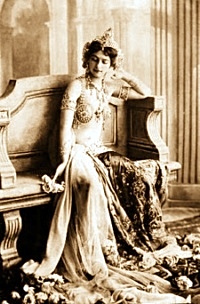 De gerechtsdossiers in de zaak tegen Mata Hari zijn de afgelopen honderd jaar bewaard in de Franse militaire archieven in Vincennes. Tijdens de tentoonstelling zijn deze stukken voor het eerst voor het publiek te zien. Surveillanceverslagen, transcripties van haar verhoren en belangrijke bewijsstukken, zoals de onderschepte telegrammen van een Duitse militair attaché in Madrid, geven een kijkje in het proces tegen Mata Hari.
De gerechtsdossiers in de zaak tegen Mata Hari zijn de afgelopen honderd jaar bewaard in de Franse militaire archieven in Vincennes. Tijdens de tentoonstelling zijn deze stukken voor het eerst voor het publiek te zien. Surveillanceverslagen, transcripties van haar verhoren en belangrijke bewijsstukken, zoals de onderschepte telegrammen van een Duitse militair attaché in Madrid, geven een kijkje in het proces tegen Mata Hari.
De tentoonstelling neemt de bezoeker mee naar sleutelmomenten in het leven van Margaretha. Een poëziealbum, schoolrapport en zelf geschreven gedichten vertellen over een gelukkige jeugd in Leeuwarden. Onlangs verkregen objecten, brieven en foto’s geven nieuwe inzichten in haar tot nu toe onderbelichte rol als vrouw en moeder in Nederlands-Indië. Een babyboek laat zien hoe ze de ontwikkeling van haar zoontje Norman en dochter Non bijhield. Na het verlies van hun zoontje raakte het stel verwikkeld in een vechtscheiding. Het Fries historisch en letterkundig centrum Tresoar verkreeg onlangs brieven die deze periode illustreren en geeft deze correspondentie in bruikleen. Deze objecten laten zien dat MacLeod weigerde alimentatie te betalen en zijn ex-vrouw al het contact met haar dochter ontzegde. Margaretha schreef te twijfelen of ze in de buurt van haar dochter moest blijven, of naar Parijs moest gaan om een carrière op te bouwen.
Van Musée Guimet in Parijs krijgt het Fries Museum een Shivabeeld en veertien wajangpoppen in bruikleen. Deze objecten vormden het decor tijdens haar eerste optredens in de bibliotheek van de rijke industrieel Émile Guimet. Uit deze periode stammen ook de plakboeken van Mata Hari. Hierin hield ze minutieus bij wat voor foto’s, affiches, recensies en artikelen over haar gepubliceerd werden. Deze persoonlijke verzameling is een van de topstukken van de tentoonstelling. In 1916, vlak voor haar arrestatie, werd Mata Hari vereeuwigd door de schilder Isaac Israëls. Het levensgrote portret van het Kröller-Müller Museum is onlangs volledig gerestaureerd. In Mata Hari: de mythe en het meisje is het schilderij voor het eerst sinds deze restauratie te zien.
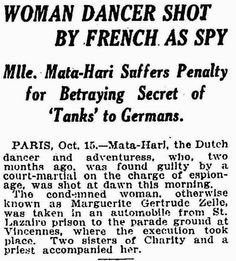 Na haar dood groeit Mata Hari uit tot een mythe. Ze is stijlicoon, sekssymbool en femme fatale. Haar leven is onderwerp van talloze boeken en spreekt internationaal tot de verbeelding. Filmsterren als Greta Garbo, Sylvia Kristel en Marlene Dietrich spelen de rol van Mata Hari. Het Fries Museum heeft een omvangrijke eigen collectie op het gebied van Mata Hari. De eigen collectie wordt aangevuld met bruiklenen uit onder andere The National Archives in Londen, Musée Guimet in Parijs, het Franse militaire archief in Vincennes en Bibliothèque nationale de France, het Nationaal Archief en diverse privé verzamelingen.
Na haar dood groeit Mata Hari uit tot een mythe. Ze is stijlicoon, sekssymbool en femme fatale. Haar leven is onderwerp van talloze boeken en spreekt internationaal tot de verbeelding. Filmsterren als Greta Garbo, Sylvia Kristel en Marlene Dietrich spelen de rol van Mata Hari. Het Fries Museum heeft een omvangrijke eigen collectie op het gebied van Mata Hari. De eigen collectie wordt aangevuld met bruiklenen uit onder andere The National Archives in Londen, Musée Guimet in Parijs, het Franse militaire archief in Vincennes en Bibliothèque nationale de France, het Nationaal Archief en diverse privé verzamelingen.
Het Fries Museum neemt bezoekers in zes tentoonstellingszalen mee op reis door het bewogen leven van Margaretha Geertruida Zelle. Het vernieuwende tentoonstellingsconcept werd ontwikkeld in samenwerking met Studio Louter. Opera Amsterdam tekent voor de theatrale vormgeving.
De tentoonstelling Mata Hari, de mythe en het meisje is onderdeel van Leeuwarden-Fryslân Culturele Hoofdstad van Europa 2018 en wordt mede mogelijk gemaakt door Provinsje Fryslân, Vrienden Fries Museum, VSBfonds, Stichting het Old Burger Weeshuis, Stichting Het Nieuwe Stads Weeshuis, Fonds Bolsward-Dronrijp 1993, Stichting Siebolt Foundation, Stichting Juckema-Sideriusfonds en Boelstra Olivier Stichting. Het Fries Museum wordt mede gefinancierd door de Ir. Abe Bonnema Stichting, de Provincie Fryslân, het Samenwerkingsverband Noord-Nederland, EZ/Kompas, de BankGiro Loterij en Aegon.
Fries Museum presenteert Mata Hari: De mythe en het meisje
Grootste Mata Haritentoonstelling ooit
Van 14 oktober 2017 tot en met 2 april 2018
# meer info op website friesmuseum
fleursdumal.nl magazine
More in: Archive M-N, Art & Literature News, CRIME & PUNISHMENT, Histoire de France, Mata Hari, The talk of the town, THEATRE
Who was the model for Edouard Degas’s world renowned sculpture of a ballet dancer? Camille Laurens embarks on a meticulous and sensitive enquiry.
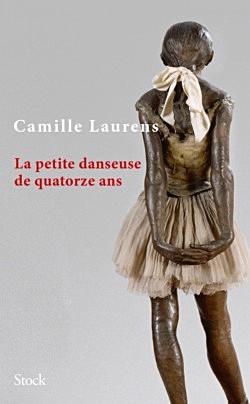 Degas’s “Little Ballerina” has always been a presence for Camille Laurens. Here the novelist tells the story of the sculpture which has been exhibited in Paris, London, New York, Washington, Chicago, Copenhage, Dresden… but few know the identity of the model.
Degas’s “Little Ballerina” has always been a presence for Camille Laurens. Here the novelist tells the story of the sculpture which has been exhibited in Paris, London, New York, Washington, Chicago, Copenhage, Dresden… but few know the identity of the model.
She looks into the childhood of Marie Van Goethem, born to Belgian parents, with an older sister who ended up as a courtesan, a younger sister who became a ballet teacher and a mother who died on the very premises of the Paris Opera. Dancing and prostitution. Revolution and the art world. Quite unintentionally, Marie would become one of the most discussed models, and was described as a “monkey” at the 1881 Salon des Indépendants exhibition.
How did Degas dare to make something beautiful of such an ugly child? And what mysterious connection was there between Degas and his subject, given that he kept the wax sculpture in his studio his whole life and never exhibited it? This enquiry ultimately leads Camille Laurens to a more personal quest.
Novelist, essayist and academic Camille Laurens has published some twenty books. In 2000, Dans ces bras-là won the Prix Fémina and the Prix Renaudot des Lycéens, and was translated into thirty languages. Her latest novel Who You Think I Am (Gallimard, 2016 / Other Press 2017) sold 50,000 copies in France.
La petite danseuse de quatorze ans
Camille Laurens
(Degas’s little ballerina by Camille Laurens)
Collection: La Bleue
Éditions Stock Paris
Parution: 01/09/2017
176 pages
Format:140 x 216 mm
EAN: 9782234069282
Prix: €17.50
fleursdumal.nl magazine
More in: - Book News, - Book Stories, Archive K-L, Art & Literature News, DANCE & PERFORMANCE, FDM in Paris, Histoire de France, Sculpture
 Michel Houellebecq ‘Rester vivant’ in: Le Palais de Tokyo Paris
Michel Houellebecq ‘Rester vivant’ in: Le Palais de Tokyo Paris
This is not a show “about” Michel Houellebecq, but a show “by” Michel Houellebecq, demonstrating how the writer has produced a form that contributes to the reinvention of exhibitions, by mixing up literature and photography, between fact and fiction
Poet, essayist, novelist and filmmaker, Michel Houellebecq has always had close ties with the cinema and the world of the visual arts, which have accompanied and extended his reflexions since the start of his career, as the frequent allusions to them in his novels attest.
This show is a scenario, leading visitors through the writer’s obsessions. Made up of sounds, photographs, installations and films he has conceived, as well as the presence of several guest artists (Robert Combas, Raphaël Sohier, Renaud Marchand and Maurice Renoma) it will offer an immersion into the world and mind of the protean creator who is Michel Houellebecq.
Curator : Jean de Loisy
An issue of the magazine PALAIS is entirely dedicated to the exhibition. Copublished with Flammarion.
An associated program will propose extensions to the exhibitions.
Exhibition From 23/06/2016 to 11/09/2016
Open every day except Tuesdays, from noon until midnight
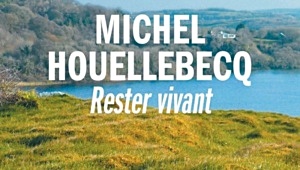 Michel Houellebecq
Michel Houellebecq
Michel Houellebecq is, since the 1990s, one of the contemporary authors of French language the most translated and read in the world.
“Michel Thomas was born on the French island Réunion in 1958, his mother was a doctor and his father a mountain guide. His early years were marked by frequent moves (Savoy, Algeria, back to Réunion). His life gained a certain stability after his parents’ divorce, when, at the age of six, he went to live with his paternal grandmother (whose maiden name, Houellebecq, he adopted as his penname).
His childhood was spent in Dicy, in the Yonne. Then his teenage years in Villiers-sur-Morin, in Seine-et-Marne.
After a high-school diploma, which he passed at the age of seventeen, he continued his education in Paris where, five years later, he qualified as an agronomist (specialising in vegetal ecology).
There then followed periods of unemployment intercut with periods of work (firstly to do with agronomics; then mostly for IT service providers).
1991 saw him publish his first book, as well become an administrative secretary at the Assemblée Nationale.
There, he had a brief career in the IT department. In 1996 he took unpaid leave for personal reasons, before resigning in 2008.”
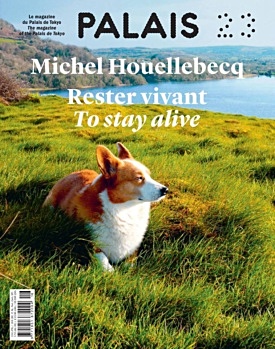 Magazine PALAIS #23
Magazine PALAIS #23
PALAIS magazine is dedicating its issue 23 to Michel Houellebecq’s exhibition “Rester vivant”, presented at the Palais de Tokyo from 23 June to 12 September 2016. This is an exceptional event, because it is the first large-scale show devoted to Michel Houellebecq as an artist. This is also a special issue of PALAIS magazine with Michel Houellebecq as guest editor-in-chief.
This issue of PALAIS magazine follows the organisation of the exhibition in chapters. Thanks to a series of unpublished interviews with Michel Houellebecq, a selection of his writings (essays, poems, novel extracts) and texts by guest authors, the issue provides a discovery of his visual universe, and its intertwining with the many creative forms which the writer uses (music, cinema, performance…).
Contents of this issue: photographs and a selection of texts by Michel Houellebecq as well as a series of interviews between Michel Houellebecq and Jean de Loisy, Yan Céh, Robert Combas (edited by Richard Leydier), Benoît Delépine, Nelly Kaprièlian, an essay by Stéphanie Moisdon and portfolios by Robert Combas, Marie-Pierre Gauthier and Renaud Marchand.
This issue of PALAIS magazine has been co-published with Flammarion.
About Michel Houellebecq’s exhibition “Rester vivant”
Bilingual (French & English)
192 pages in color;
Format : 285 x 225 mm
ISSN 1 951-672X
ISBN 978-2-84711-061-6
15 € (FRANCE)
Palais de Tokyo
13 Avenue du Président Wilson,
75116 Paris, France
# More info on website Palais de Tokyo
fleursdumal.nl magazine
More in: - Book News, FDM in Paris, Histoire de France, Michel Houellebecq, Photography
.jpg)

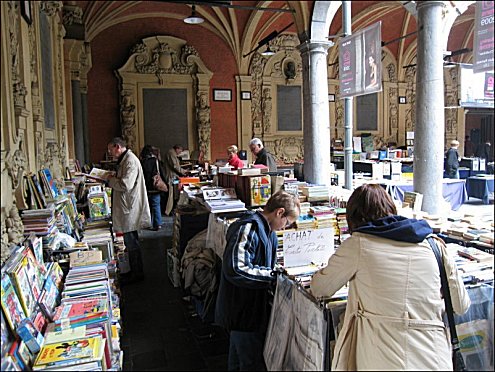
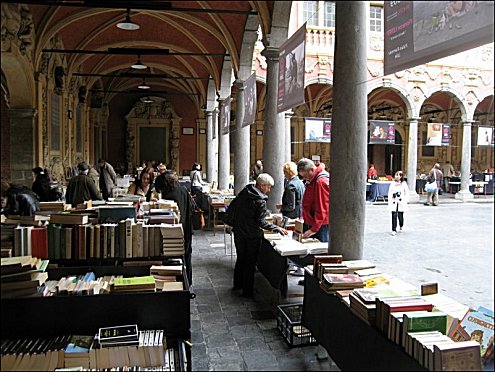
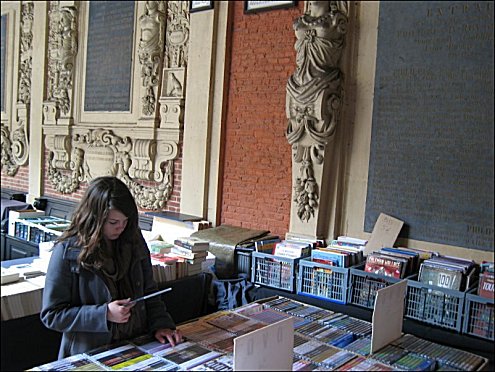

.jpg)
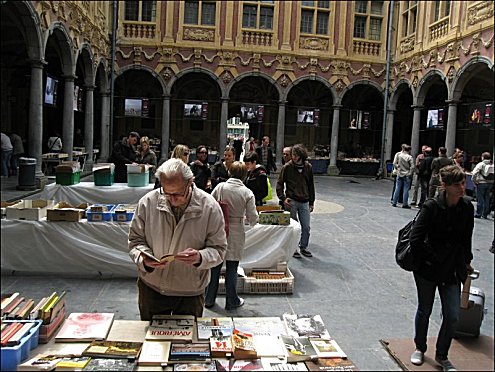

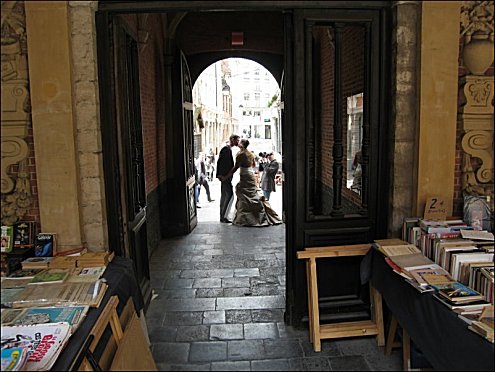


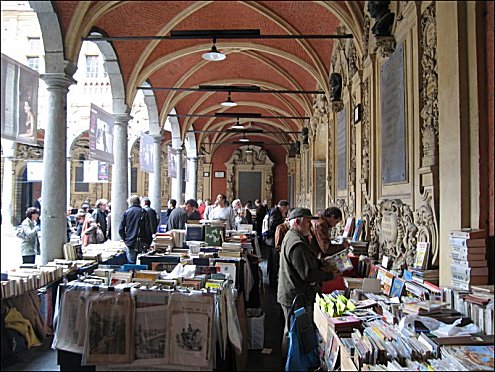
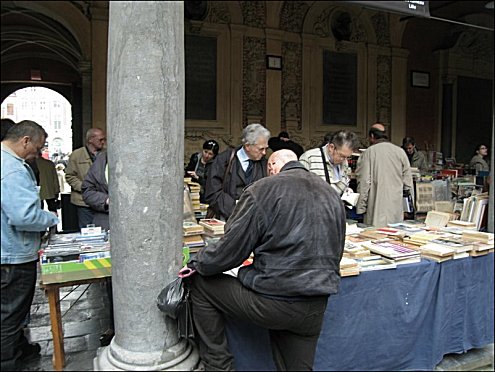
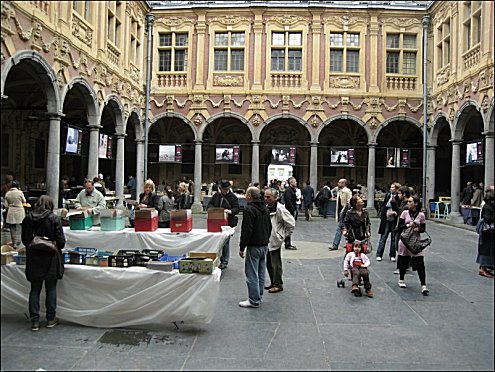
Joep Eijkens photos:
Old books and new life in the ‘Vieille Bourse’ in Lille
fleursdumal.nl magazine
More in: Histoire de France, Joep Eijkens Photos
Thank you for reading Fleurs du Mal - magazine for art & literature